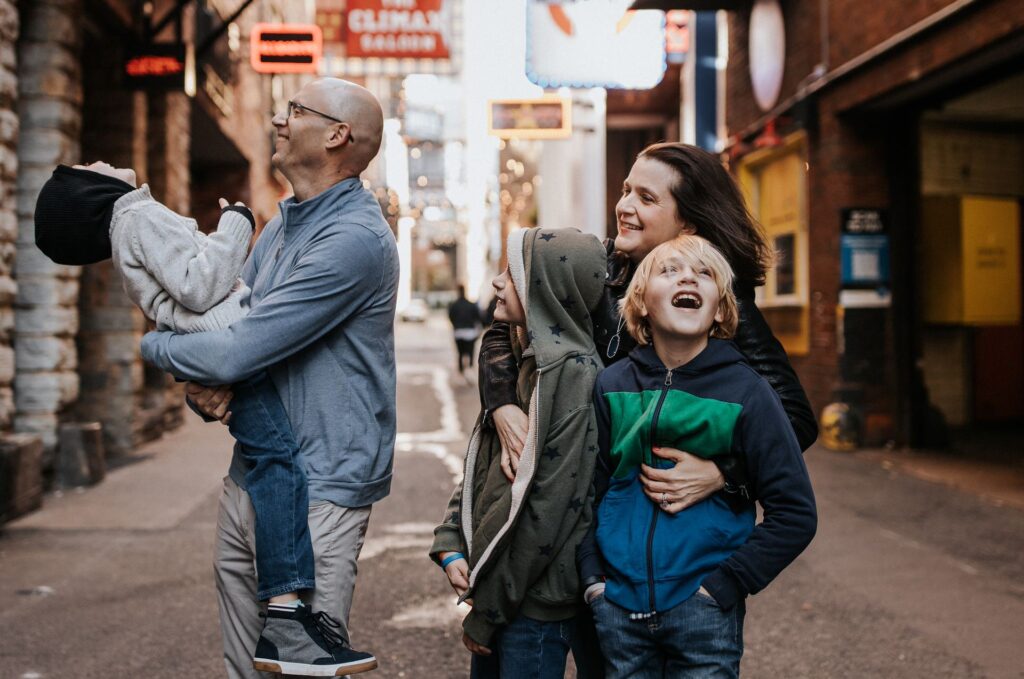Ever wondered what lifestyle photography is? It’s more than just snapping candid shots.
Lifestyle photography is an art form that captures real-life events in a visually appealing way. It’s about telling stories and showcasing people in their natural environment – as a family and newborn photographer.
This guide will delve into the aesthetics of lifestyle photography and provide insights into capturing authentic lifestyle images.
Iris x

Defining Lifestyle Photography
Lifestyle photography is a genre that focuses on the art of everyday life. It’s not about staged, perfect shots.
Instead, it captures authentic moments and natural interactions. It’s about documenting real-life events artistically.
This style of photography often involves candid shots, reflecting spontaneity and authenticity.
In essence, lifestyle photography is about capturing the beauty of life as it unfolds.
The Essence of Lifestyle Aesthetics

Lifestyle aesthetics play a crucial role in this genre. They help create a mood and convey a sense of the subject’s personality or brand.
The aesthetics are often defined by the environment, lighting, and the subject’s interaction with these elements.
In lifestyle photography, the aesthetics are as much a part of the story as the subjects themselves.
Candid vs. Posed: The Lifestyle Approach
Lifestyle photography often involves candid shots. These reflect authenticity and spontaneity, unlike traditional posed portraits.
The goal is to capture genuine emotions and moments. This is achieved by focusing on natural interactions and settings.
In essence, lifestyle photography is more relaxed and less controlled. It’s about capturing the essence of a moment without the need for elaborate setups or staging.
Capturing Authenticity in Everyday Moments
Lifestyle photography documents everyday moments and milestones. It could be family gatherings, hobbies, or routines.

The beauty of this genre lies in its ability to narrate a part of a larger story. Each image is a snapshot of life, filled with genuine emotions and interactions.
In lifestyle photography, the ordinary becomes extraordinary. It’s about finding beauty in the mundane and celebrating authenticity.
Lighting and Environment in Lifestyle Photography
Lighting plays a crucial role in lifestyle photography. Soft, natural light is often favored to create a warm and inviting atmosphere.
Another key element is the environment. Photographers often use the subject’s home, workplace, or favorite spots to add a personal touch.
Together, lighting and environment help to create a sense of authenticity and intimacy in lifestyle photography.
Lifestyle Photography in Personal Branding
Lifestyle photography is a powerful tool for personal branding. It can reflect an individual’s or a company’s values, creating a solid connection with the audience.
Images that capture real-life moments can tell a compelling story about the brand. They can showcase the brand’s personality in a relatable and authentic way.
In a world where authenticity is highly valued, lifestyle photography can give a brand a competitive edge and help it stand out in a crowded market.

Tips for Aspiring Lifestyle Photographers
Understanding your subject is key for those looking to delve into lifestyle photography. Building a rapport can help capture genuine emotions and moments.
Patience and observation are also crucial. They allow you to anticipate and capture spontaneous moments reflecting the subject’s lifestyle.
Remember, lifestyle photography is about capturing authenticity. So, keep your setups simple and let the moments unfold naturally.
Why Lifestyle Photography Matters
Lifestyle photography holds a unique place in the world of photography. It captures the essence of people’s lives, telling their stories through authentic, candid moments.
This genre of photography is not just about taking pictures. It’s about creating a narrative, a visual representation of a person’s life, brand, or story.
In a world where authenticity is valued, lifestyle photography truly shines. It’s more than a trend; it’s a powerful tool for visual storytelling.


